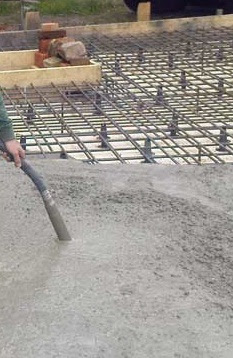We know cohesive soils are less impermeable. The degree of impermeability depends on the texture and mineral structure of soil particles and also on many other factors. We have already discussed about consolidation of soil. The aim of using sand blanket is to facilitate better consolidation. A better consolidated soil deposit suffers less settlement.
In a saturated deposit of cohesive soil, fills or soil preloads are provided for this purpose. These fills or preloads increase the length of drainage path and this increment in drainage path perhaps occurs at top of fill. As we know, the path length of drainage of saturated soil determines the time required for consolidation and these is desired to be the shortest that can practically be achieved.
In case of site where water table is found very near to ground surface, the site is prepared with monoslope(where with of site is small) or shallow ditches to collect squeezed water is provided in series(for a large site). These slopes are provided creating a graded cutting. For this purpose in site grades (if any) are used for economy and ease of work. Then sand blanket is provided.
The blanket is provided by placing a (100-150) mm thick sand layer on both collecting ditches, stated above, and over the site. After providing sand blanket preloading is applied. The soil that get consolidated by preload, release water as soil get squeezed and this water is collected through ditches or from edge of sand blanket and flows to disposal edge. These process accelerate drainage as we know the sand has large co-efficient of permeability.


























